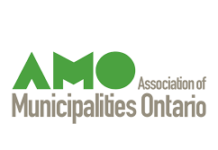At the Annual Conference of the Association of Municipalities of Ontario (AMO), which was carried on-line from August 17 to 19, Gary Dyke, Chief Administrative Officer, Municipality of North Grenville, was acclaimed to the AMO Board of Directors, as Secretary-Treasurer. As a member of the Board, Gary Dyke will help set policy for the association and serve as a key municipal leader in the province.
“AMO benefits from membership from across the Province, and a Board that reflects the diversity of Ontario’s municipal governments. To that end, I am pleased to have Gary Dyke on the 2020-2022 Board team,” said newly elected AMO President Graydon Smith, Mayor of Bracebridge who is beginning a two-year term.
The three-day AMO Conference is being delivered online for the first time, due to COVID-19. It is the largest gathering of government leaders since the COVID-19 pandemic began.
On its first day, the virtual meeting was addressed by Premier Doug Ford, who brought the good news to municipalities that the envelope and structure of the Ontario Municipal Partnership Fund (OMPF) would remain unchanged for 2021 – guaranteeing $500 million of critically important funding for municipalities, particularly in rural and northern communities. The government had begun the first phase of its commitment to deliver $4 billion in federal and provincial assistance to municipal governments, hard hit by COVID-19 and related costs, including more than $400,000 to North Grenville and over $85,000 for Merrickville-Wolford.
The conference was addressed on the second day by opposition leaders Andrea Horwath of the NDP, and Liberal Leader, Steven Del Duca, both of whom stressed the importance of municipalities as partners with the provincial parties, as they are, as Andrea Horwath pointed out, “the level of government closest to the people”.
Steven Del Duca agreed with that approach, noting that: “The only way to defeat major challenges – like a pandemic, like climate change, like a global recession – is to work together.” In response, Mayor Smith stated: “Municipalities are keen to work with the federal and provincial governments to find solutions and to build capacity as quickly as possible.”
Local M.P.P., Steve Clark, also addressed AMO, as Minister for Municipal Affairs and Housing. Much of his talk congratulated municipalities and his own government for the way in which the covid pandemic was handled over the past months, and gave some details on how new legislation allowing for Minister’s Zoning Orders gave more authority to municipalities to be more flexible in how they dealt with issues of planning and administration.
He talked about changes being made to the regulations governing Development Charges and Community Benefit charges:
“We’ve added many services to the list of eligible development charge services. Including long-term care, parks and recreation facilities, libraries, public health, and more… all of which will be 100 per cent cost-recoverable. The community benefits charge, on the other hand, is a new revenue tool that some of you will be able to use for higher density residential development. And, we are maintaining the existing provisions used to secure land for parks.
Municipalities will have the flexibility to choose to use the community benefits charge – in addition to parkland tools.”
In keeping with comments from other politicians, he ended: “Now that we are in the post-peak period, our government knows that municipalities will be leaders in Ontario’s recovery”.
The third and final day of the Conference included Steve Paikin, from TVO’s The Agenda, hosting a panel on economic recovery. A theme which echoed through the discussion, and has been emphasised by North Grenville’s Mayor recently, was the need to ensure that everyone in Ontario has broadband access, given the social and economic impacts of COVID-19.
AMO also signed a Declaration of Mutual Commitment and Friendship with the Ontario Federation of Indigenous Friendship Centres (OFIFC). These are places where Indigenous people living in urban communities can gather, connect and receive culturally based services.








